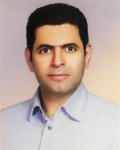| Authors | حمید غلامی,مهدی جلالی,علی اکبر محمدی فر,Yougui Song,Yue Li,Yanping Wang,Baicheng Niu,ابراهیم امیدوار,Dimitris G. Kaskaoutis,مرضیه رضایی |
|---|
| Journal | Aeolian Research |
|---|
| Page number | 1 |
|---|
| Volume number | 67 |
|---|
| IF | ثبت نشده |
|---|
| Paper Type | Full Paper |
|---|
| Published At | 2024-04-27 |
|---|
| Journal Grade | Scientific - research |
|---|
| Journal Type | Electronic |
|---|
| Journal Country | Iran, Islamic Republic Of |
|---|
| Journal Index | SCOPUS ,JCR |
|---|
Abstract
Soil erosion by water and wind is a critical challenge for sustainable management of catchments in drylands and accurate spatial information can help in mitigation of its destructive consequences. Here, seven machine learning (ML) models were applied to map simultaneously the water and wind erosions in the Bakhtegan catchment, south Iran, with three dried lakes in its southern part and three dams established in upstream parts of the lakes. The analysis identified 10 and 11 effective variables controlling water and wind erosions, among 20 and 17 potential variables, respectively, via the MARS feature selection algorithm. According to the most accurate ML models (artificial neural network for water erosion, and Cubist for wind erosion), an integrated model was developed to map soil erosion by water and wind simultaneously. Permutation feature importance (PFI) and Shapley additive exPlanation (SHAP) interpretation techniques were employed to explain the model outputs, revealing that 19.7 % of the total area belonged to high and very high susceptibility classes to soil erosion by water and wind. The PFI plot revealed that the slope and wind speed were the most influencing factors for water and wind erosion, respectively. According to SHAP decision plot, slope had the highest contribution on the predictive water erosion model’s output, whereas vegetation cover exhibited the highest contribution on the predictive wind erosion model’s output. Due to climate change and intensified drought during the recent years, as well as due to construction of dams upstream of the lakes, the southern part of the study area was converted to a source of sand and dust storms. The hotspots with severe water erosion are distributed all over the study area, rendering it quite vulnerable to adverse climate change projections.
